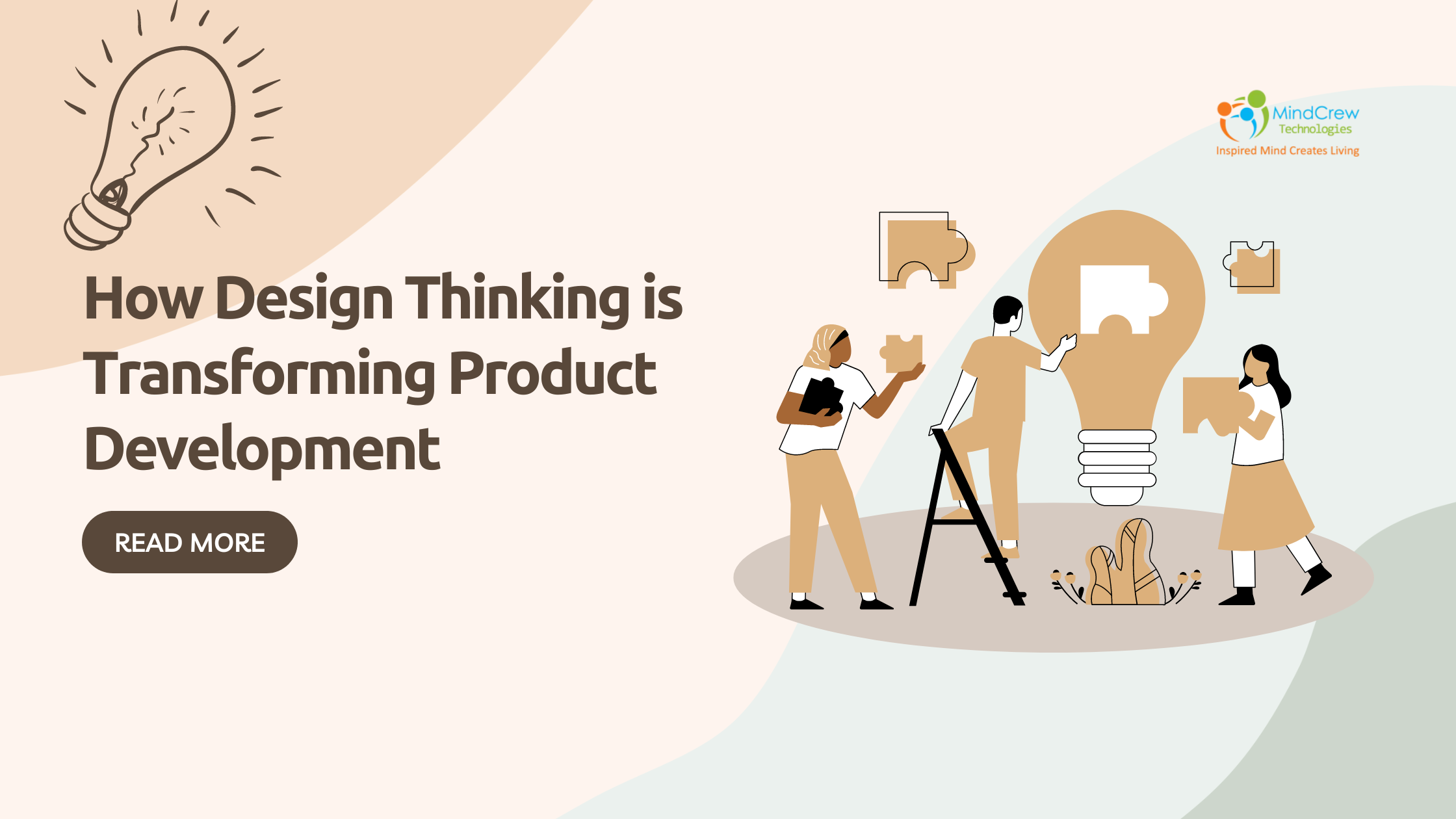How Design Thinking is Transforming Product Development
Design thinking has emerged as a revolutionary approach in the product development landscape, fundamentally changing how companies innovate and create products. By placing users at the center of the design process, design thinking allows companies to develop products that are not only functional but also deeply resonant with the needs and desires of their customers. In this blog, we’ll explore how design thinking is transforming product development, its key principles, and its impact on various industries.
Understanding Design Thinking
Design thinking is a problem-solving approach that focuses on understanding users, challenging assumptions, redefining problems, and creating innovative solutions that can be prototyped and tested. It’s a non-linear, iterative process that consists of five phases: Empathize, Define, Ideate, Prototype, and Test.
- Empathize: Understanding the needs of the users by observing and engaging with them.
- Define: Clearly articulating the problem that needs to be solved.
- Ideate: Generating a wide range of ideas and potential solutions.
- Prototype: Creating scaled-down versions of the product or specific features.
- Test: Trying out the prototypes with users and gathering feedback.
The Role of Empathy in Product Development
One of the cornerstones of design thinking is empathy. By deeply understanding the users’ experiences, emotions, and needs, product developers can create products that genuinely address the problems users face. Empathy-driven design thinking allows for the creation of user-centric products, which increases the chances of product acceptance and success in the market.
For instance, companies like Apple have leveraged empathy to create products that not only meet technical requirements but also connect with users on an emotional level. The iPhone, for example, was developed with a deep understanding of how users interact with technology, leading to an intuitive and seamless user experience.
Redefining Problems Through Design Thinking
Another significant aspect of design thinking is its ability to redefine problems. Traditional problem-solving methods often focus on addressing symptoms rather than the root cause. Design thinking encourages teams to explore the problem space more deeply, often leading to the identification of underlying issues that were previously overlooked.
For example, when Airbnb was struggling to gain traction in its early days, the founders used design thinking to understand the core problem. They realized that the photos of rental listings were often unappealing, leading to low booking rates. By addressing this issue—rather than just focusing on marketing or pricing strategies—they were able to turn the company around.
Fostering Innovation Through Ideation
The ideation phase of design thinking encourages creativity and innovation. By bringing together cross-functional teams and fostering an environment where diverse ideas are welcome, companies can explore a wide range of solutions. This diversity of thought is crucial for innovation, as it allows teams to think outside the box and come up with groundbreaking ideas.
For instance, IDEO, a global design company, uses design thinking to help organizations innovate. Their work with the Mayo Clinic led to the development of new healthcare services that improved patient experiences by focusing on their emotional and psychological needs, not just their physical health.
Prototyping and Testing: Reducing Risk and Enhancing Learning
Prototyping and testing are integral to the design thinking process. By creating prototypes, companies can quickly and inexpensively explore different solutions and identify potential issues before full-scale production begins. This iterative process of prototyping and testing reduces the risk of failure, as it allows for continuous learning and refinement of the product.
In the automotive industry, for example, Tesla uses design thinking principles to rapidly prototype and test new features. This approach has enabled them to innovate quickly, bringing electric vehicles with cutting-edge technology to market faster than traditional car manufacturers.
The Impact of Design Thinking on Product Development
Design thinking is not just a methodology; it’s a mindset that transforms how companies approach product development. Its impact can be seen across various industries, from technology to healthcare, and from consumer goods to financial services.
1. Technology Industry
In the technology sector, design thinking has become a vital tool for companies looking to create user-friendly and innovative products. Companies like Google and Microsoft have embedded design thinking into their product development processes, leading to the creation of products that are not only technically advanced but also intuitive and easy to use.
For example, Google’s design sprints, a time-constrained, five-phase process, are rooted in design thinking. These sprints help teams rapidly prototype and test ideas, ensuring that the final product aligns with user needs and expectations.
2. Healthcare Industry
Design thinking has also made significant inroads into the healthcare industry. By focusing on the patient experience, healthcare providers can develop solutions that improve patient outcomes and satisfaction. The Cleveland Clinic, for example, used design thinking to redesign their patient experience, leading to higher patient satisfaction and better healthcare delivery.
Additionally, design thinking has been instrumental in developing medical devices and digital health tools. By involving patients and healthcare professionals in the design process, companies can create products that are more effective and user-friendly.
3. Consumer Goods
In the consumer goods sector, design thinking has enabled companies to create products that resonate with consumers on a deeper level. By understanding the emotional and psychological needs of consumers, companies can develop products that are not only functional but also emotionally engaging.
For instance, Procter & Gamble (P&G) has successfully used design thinking to innovate across its product lines. The development of the Swiffer cleaning system is a prime example. By empathizing with users and understanding their pain points with traditional cleaning methods, P&G was able to create a product that revolutionized home cleaning.
4. Financial Services
Even in the traditionally conservative financial services industry, design thinking is making waves. Banks and financial institutions are using design thinking to create customer-centric services and digital platforms that enhance user experiences.
For example, BBVA, a global financial services group, adopted design thinking to revamp its mobile banking app. By focusing on the user experience and involving customers in the design process, they created an app that is intuitive, user-friendly, and highly rated by users.
Challenges in Implementing Design Thinking
While design thinking offers numerous benefits, its implementation is not without challenges. Companies may face resistance to change, especially in industries that are accustomed to traditional product development processes. Additionally, design thinking requires a cultural shift towards embracing experimentation, failure, and iteration, which can be difficult for some organizations to adopt.
Another challenge is the need for cross-functional collaboration. Design thinking thrives in environments where diverse teams work together, but this requires breaking down silos and fostering open communication—a significant shift for many companies.
Design Thinking in the Future of Product Development
As we look to the future, design thinking is poised to play an even more significant role in product development. With the rise of artificial intelligence (AI), big data, and the Internet of Things (IoT), the need for user-centric design will only increase. These technologies offer new opportunities for innovation, but they also present new challenges that require a deep understanding of user needs.
Moreover, as consumers become more conscious of social and environmental issues, design thinking will be essential in developing sustainable and ethical products. Companies that can empathize with these concerns and integrate them into their product development processes will have a competitive advantage.
Conclusion
Design thinking is transforming product development by placing the user at the center of the design process. Its principles of empathy, problem redefinition, ideation, prototyping, and testing are driving innovation across industries. By focusing on user needs and fostering a culture of creativity and collaboration, companies can develop products that are not only functional but also emotionally resonant with their customers.
As more companies embrace design thinking, we can expect to see a shift towards more user-centric, innovative, and sustainable products. The future of product development lies in the hands of those who can truly understand and empathize with their users, and design thinking is the key to unlocking that potential.







